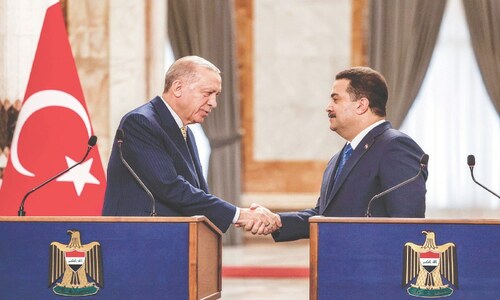BOYHOOD, an American film, was at the centre of much attention earlier this year at the Cannes Film Festival. The uniqueness of the movie lies in the fact that its shooting lasted from 2002 to 2014, the actor playing the main role growing up from an innocent six-year-old into his adulthood as a brash, bearded young fellow.
But a Frenchman, Michel Guyot, has his own definitely profounder ideas about creating history in real time. His inspiration came following a visit twenty years ago to an ancient and abandoned stone pit in Treigny in the Bourgogne region, some 200 kilometres south-west of Paris.
A specialist in medieval history and architecture, Guyot says: “All the material one could hope for was there and the place, in the middle of a picturesque forest next to a charming lake, was the ideal site for going ahead with my project.”
He put down his recommendations on paper and submitted them to the authorities. According to his purely fictitious script, a thirteenth century nobleman named Count Guilbert de Guédelon orders the construction of a chateau on the sumptuous, beautiful property that he owns.
Once he had the green light, Guyot started the execution of his master plan in 1997 (1229, following his scenario). He calculated it would take twenty-five years to accomplish his dream.
Some fifty people from the region are trained and given a number of manual jobs ranging from carving stone bricks to preparing doors and windows out of cut-down trees. About two hundred others, mostly youngsters, voluntarily give a helping hand.
The techniques employed for the chateau’s construction belong to the medieval age and tools using modern power sources such as drills and cutters are strictly prohibited. Even radios, mobile phones and electric lamps are not allowed.
The first year was mainly spent on clearing the construction site of trees and plants but, as of 2002, a number of high stone walls, staircases and the beginnings of towers and a bridge were clearly visible from a distance.
By the year 2011 one could notice the now distinguishable shape of a chateau and the residential quarters of ‘Count Guilbert de Guédelon’ with the tiled roof shining in the sun.
All the stone bricks are handcrafted with the use of hammers and chisels, and the earthen tiles are created made-to-measure and baked on the spot on log fire. As cement did not exist in the medieval age, the project uses only mortar prepared with lime, earth, sand and water.
No cranes are being used to lift the stones, tiles and heavy woodwork. A number of giant wooden wheels have been erected for the purpose. Inside them, strong men take sturdy steps forward in unison, their movement causing the wheels to spin clockwise or anticlockwise. The energy thus created makes handwoven ropes go up or come down, lifting ponderous objects to the desired height or descending them to the ground.
Another source of power was inaugurated before the public on May 21 last year. This is a mill that draws its force with the downward flow of water from the lake. The weight of falling water makes a gigantic wheel turn speedily.
The vast construction area also requires the displacement of building material from one spot to the other. Donkeys and ponies — not trucks or tractors — perform this errand effectively.
Following a documentary, Secrets of the Castle, telecast by the BBC, the number of visitors to Guédelon has swelled to more than 300,000 per year.
“They are most welcome,” says Guyot, “but as far as I am concerned, this is primarily a scientific mission that will allow us to bring to light unresolved theories about how forts, palaces and chateaux were built. Hopefully, we shall be able to inaugurate it in 2022 … or 1254 if you prefer!”
—The writer is a journalist based in Paris.
Published in Dawn, July 5th, 2015
On a mobile phone? Get the Dawn Mobile App: Apple Store | Google Play














































Dear visitor, the comments section is undergoing an overhaul and will return soon.